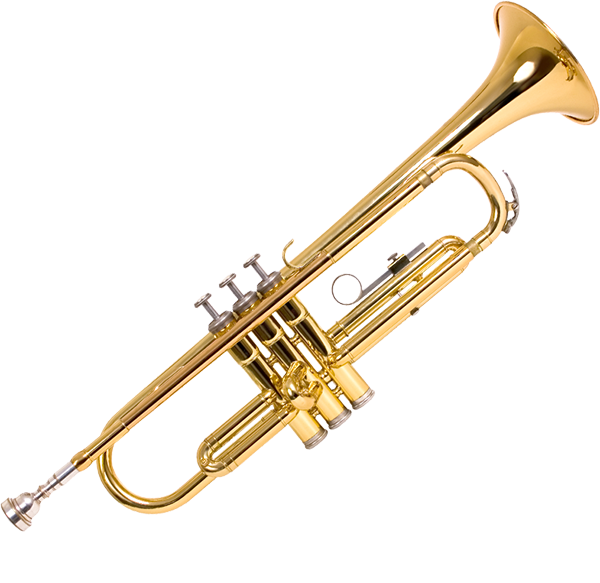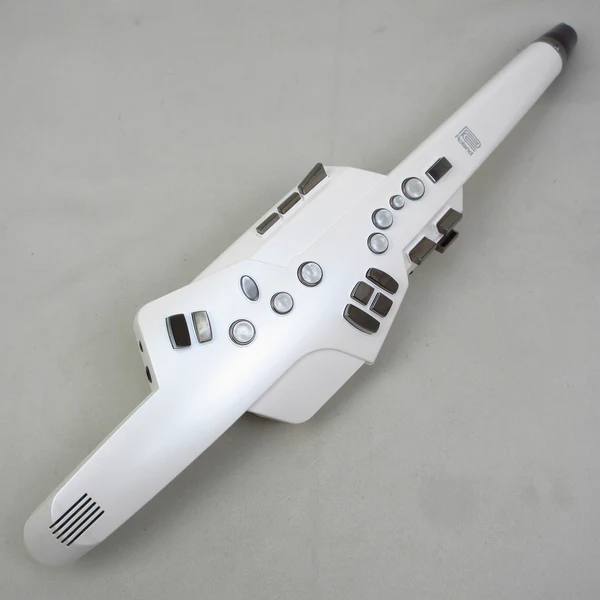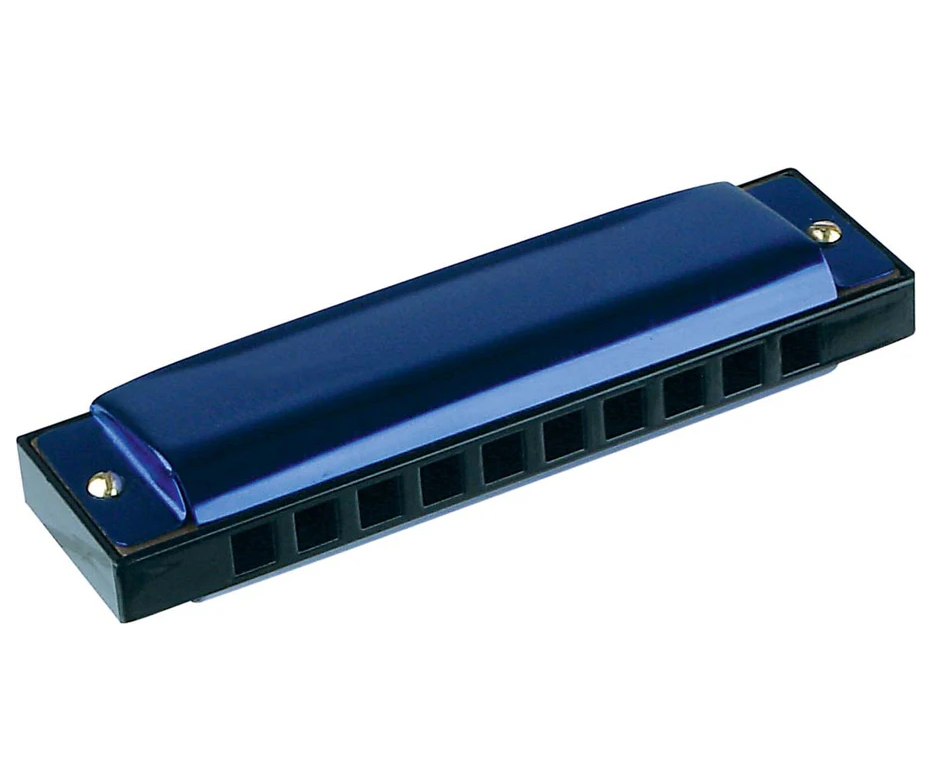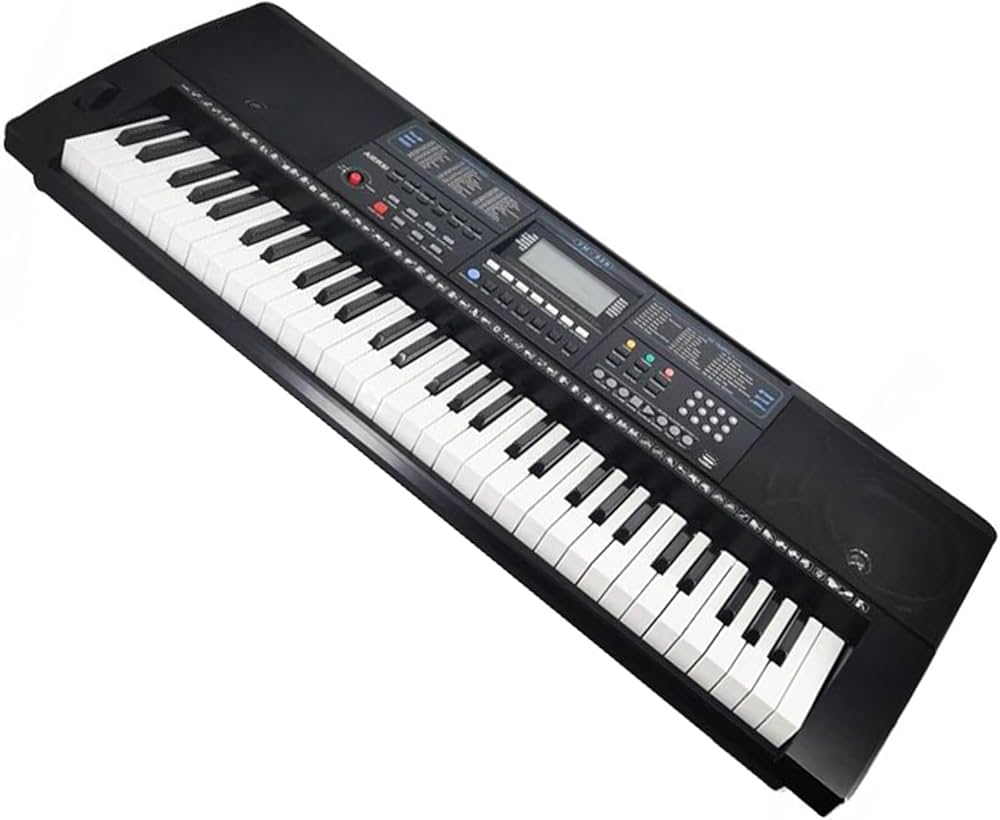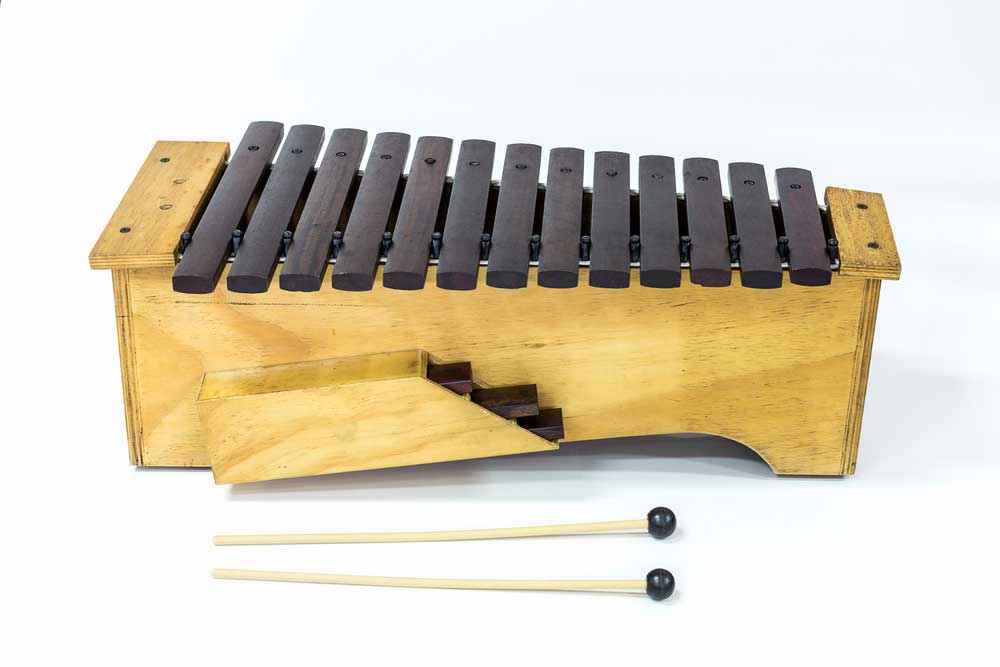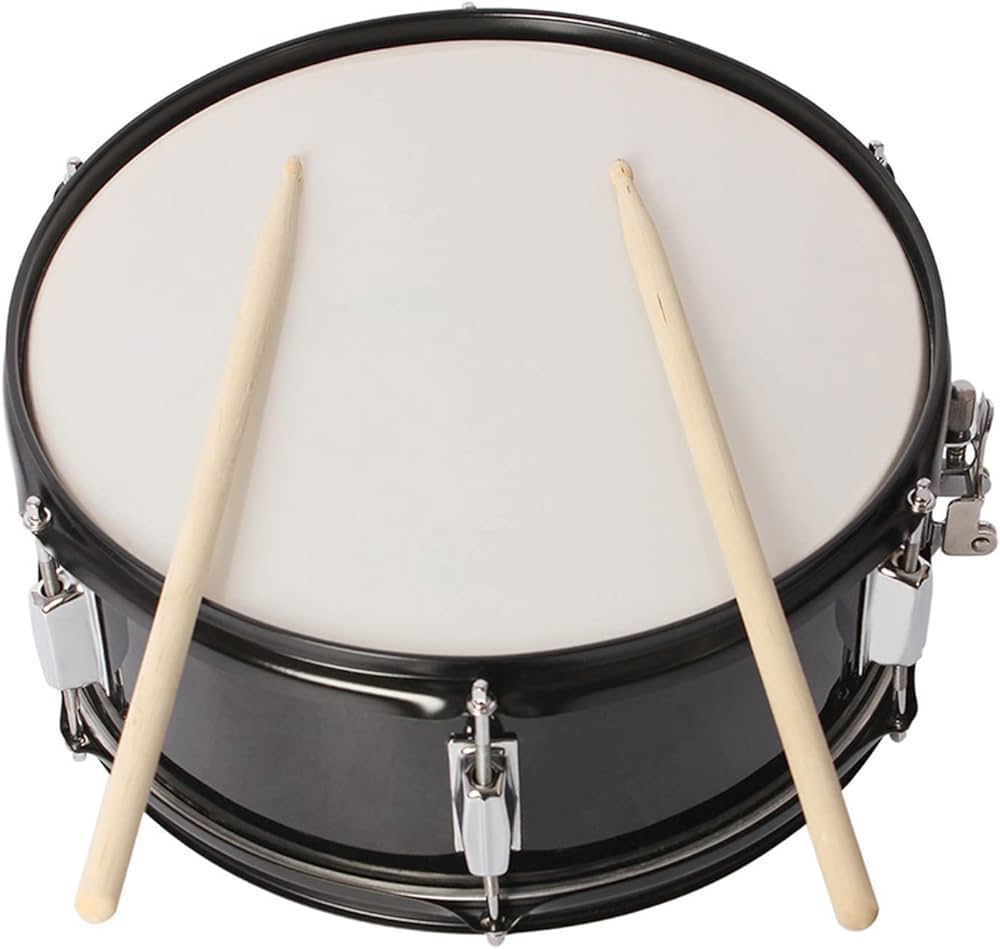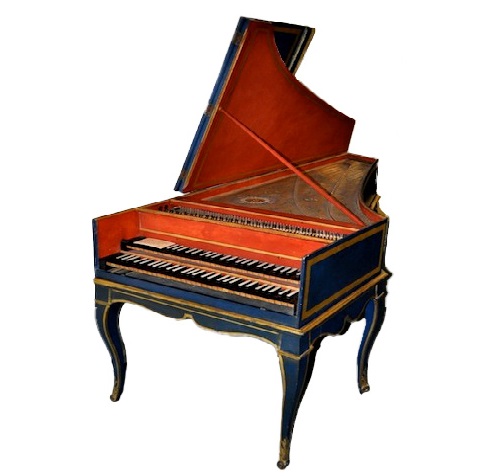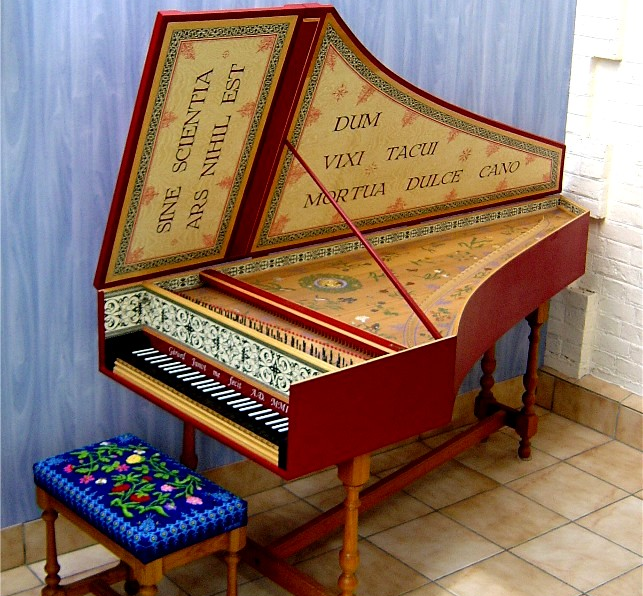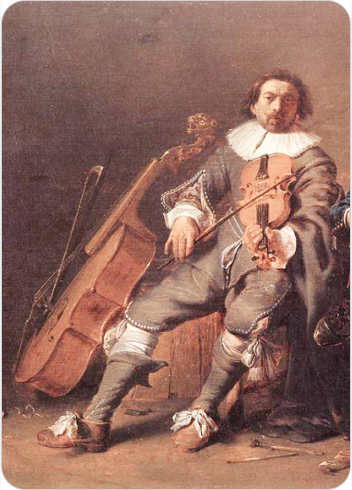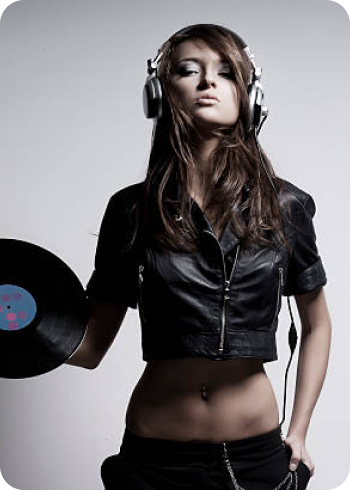Harpsichord
Keyboard Instruments
Europe
Between 1001 and 1900 AD
Video
The harpsichord is a keyboard-based musical instrument known for its distinctive, bright, and resonant sound. Unlike the piano, where strings are struck by hammers, the harpsichord produces sound by plucking its strings with small plectra made from quill or plastic. This mechanism gives the harpsichord its characteristic timbre, which is often described as sharp and metallic.
The instrument is housed in a wooden case, with a soundboard that amplifies the vibrations of the strings, making the music audible to listeners. Typically, harpsichords have one or more keyboards (manuals), and some models include additional features such as a pedalboard or stop levers to modify the sound. The harpsichord is part of a broader family of plucked keyboard instruments, which includes smaller variants like the virginals, spinet, and muselar. These instruments share similar mechanisms but differ in size, shape, and tonal qualities. The harpsichord played a vital role in Renaissance and Baroque music, serving both as an accompaniment and solo instrument. Its unique sound made it a staple in ensembles and continuo groups during these periods.
Type of Instrument
The harpsichord belongs to the chordophone family of instruments, which produce sound through vibrating strings stretched between fixed points. Within this family, it is classified as a plucked string instrument due to its mechanism of sound production. The harpsichord is also categorized as a keyboard instrument because it uses keys to activate the plucking mechanism. This dual classification highlights its unique position in the world of musical instruments. Unlike modern pianos that rely on dynamic touch to vary volume, the harpsichord produces a consistent sound regardless of how hard or soft the keys are pressed. This limitation led to innovations such as multiple sets of strings (registers) and stop mechanisms to provide tonal variety. Registers are often labeled by their pitch relative to normal tuning; for example, an 8-foot register sounds at standard pitch, while a 4-foot register produces notes an octave higher.
History of the Harpsichord
The origins of the harpsichord can be traced back to Europe during the late Middle Ages or early Renaissance period. Its exact beginnings remain uncertain due to limited historical records. However, by the 16th century, the harpsichord had become one of the most important keyboard instruments in European music. It was widely used across England, Italy, France, Germany, and other parts of Europe. During the Renaissance and Baroque eras (16th–18th centuries), the harpsichord flourished as both an accompaniment instrument and a solo performer’s tool. Composers such as Johann Sebastian Bach, Jean-Philippe Rameau, William Byrd, and Henry Purcell wrote extensively for it. National schools of harpsichord construction emerged during this time, each with distinct styles and designs. For instance, Italian harpsichords were known for their simplicity and bright tone, while French models were more ornate with richer sounds.
By the mid-18th century, however, the harpsichord began to lose prominence due to the rise of the fortepiano—a precursor to the modern piano. The piano’s ability to vary dynamics (loudness) based on touch made it more versatile than the harpsichord. As a result, the latter gradually faded from mainstream use by the early 19th century.
The 20th century saw a revival of interest in historical performance practices, leading to renewed appreciation for the harpsichord. It became popular in performances of Baroque music and even appeared in some contemporary compositions and genres like Baroque pop.
Construction and Design
The construction of a harpsichord involves intricate craftsmanship designed to optimize its acoustic properties. The instrument typically consists of a wooden case that houses its strings and mechanical components. The strings are stretched over a soundboard made from materials like spruce or cypress wood—chosen for their ability to amplify vibrations effectively. Each string is attached at one end to a tuning pin embedded in a pinblock or wrestplank. The other end is secured by a hitchpin on the opposite side of the case. Strings pass over two critical points: the nut near their tuning pins and the bridge on top of the soundboard. These components help define each string’s vibrating length and contribute to its tonal quality. The plucking mechanism relies on jacks—thin strips of wood that rest on keys at one end and hold plectra at their top ends. When a key is pressed down by the player’s finger, its corresponding jack rises upward; this action causes its plectrum to pluck its assigned string(s). Upon releasing the key, dampers atop each jack mute any residual vibrations. Harpsichords often feature multiple manuals (keyboards), allowing players access to different registers or sets of strings tuned at varying pitches (e.g., 4-foot vs 8-foot). Stop levers enable musicians to activate or deactivate specific registers during performance for greater tonal variety.
Types of Harpsichords
Several types of harpsichords exist within this family:
Standard Harpsichords: These are full-sized instruments with one or two manuals capable of producing diverse tonal effects.
Virginals: Smaller rectangular versions with only one set of strings per note; they produce softer tones suitable for intimate settings.
Spinets: Compact triangular-shaped models where strings run diagonally; they are simpler than standard harpsichords but share similar mechanics.
Muselars: A variant where strings are plucked closer toward their centers; this design yields richer harmonic overtones compared with virginals or spinets.
Each type serves specific musical purposes depending on context—whether accompanying vocalists/ensembles or performing solo repertoire.
Characteristics
The defining characteristic of any harpsichord lies in its unique timbre—a bright yet delicate sound achieved through plucked-string mechanics rather than percussive hammer strikes (as seen in pianos). This uniformity across notes creates an elegant consistency ideal for polyphonic textures common during Renaissance/Baroque periods. However limited dynamic range poses challenges when conveying emotional contrasts compared with later keyboard technologies like pianos capable expressive crescendos/diminuendos via touch sensitivity alone! To compensate composers/performers exploit creative techniques combining stops/registers layering contrasting textures/pitches achieving nuanced effects despite inherent limitations.
Playing Techniques and Sound Modifications
The harpsichord requires a unique approach to playing, distinct from the piano. Unlike the piano, the harpsichord produces sound by plucking strings with a plectrum, necessitating specific techniques for optimal performance.
Gravity and Weight Transfer: Playing the harpsichord involves using gravity to depress the keys rather than actively striking them with finger motion. Players rest their fingers lightly on the keys, allowing the weight of their hand to shift naturally from one finger to another. This technique, called “on the string,” ensures smooth sound transitions and enhances tonal richness12.
Relaxation and Arm Position: Relaxation is critical in harpsichord playing. Players must maintain free elbows and relaxed arms to avoid tension that can disrupt sound production. The arm should move fluidly, allowing seamless transitions between chords and leaps.
Closed Hand Position: A closed hand position, where fingers are slightly curled inward, is ideal for harpsichord playing. This posture minimizes motion and facilitates precise articulation. Players release keys by curling fingers into the palm rather than lifting them abruptly, which helps avoid harsh sound interruptions.
Sideways Motion: Navigating the keyboard involves moving sideways close to the keys rather than making large arcs. This economy of motion ensures smooth articulation during complex fingerings and leaps.
Sound modifications on the harpsichord are limited due to its mechanism. Unlike a piano, dynamics cannot be controlled by touch; instead, players rely on articulation techniques such as overholding (allowing notes to bleed into each other) to enrich the sound.
Applications in Music
The harpsichord played a pivotal role in Baroque music and was widely used in chamber music, orchestral works, and solo performances. It served as a continuo instrument in ensembles, providing harmonic support by realizing figured bass notation.
Baroque Era: Composers like Johann Sebastian Bach, George Frideric Handel, and Domenico Scarlatti wrote extensively for the harpsichord. It was central to Baroque forms such as fugues, sonatas, and concertos.
Modern Revival: Although its popularity waned during the Classical period with the rise of the piano, 20th-century musicians revived interest in the harpsichord. Modern composers like György Ligeti incorporated it into contemporary works.
Crossover Genres: The harpsichord has occasionally appeared in jazz and experimental music due to its distinctive timbre.
Most Influential Players
Several musicians have shaped the history of the harpsichord through their performances and contributions.
Wanda Landowska: A 20th-century pioneer who revived interest in the harpsichord. Her recordings of Bach’s works remain influential.
Scott Ross: Renowned for his interpretations of Scarlatti’s sonatas, Ross recorded all 555 of them—a monumental achievement.
Gustav Leonhardt: A leading figure in early music performance practice, Leonhardt’s interpretations of Baroque repertoire set benchmarks for authenticity.
Jory Vinikour: A modern virtuoso known for performing harpsichord repertoire on both historical instruments and piano adaptations.
Maintenance and Care
Proper maintenance is essential to preserve a harpsichord’s delicate mechanism. Harpsichord strings require regular tuning due to their susceptibility to environmental changes. Over time, strings may need replacement if they lose tension or break. The plectra that pluck strings must be checked periodically for wear. These small components can be replaced or adjusted to ensure consistent sound quality. Harpsichords are often made from fine woods that need protection from humidity fluctuations. Using climate-controlled environments prevents warping or cracking. Dust accumulation can affect both aesthetics and functionality. Gentle cleaning with soft brushes or cloths is recommended to avoid damaging intricate carvings or finishes.
Cultural Significance
The harpsichord holds deep cultural significance as an emblem of Baroque music and artistic refinement. In its heyday during the 17th and 18th centuries, owning a harpsichord was a sign of wealth and sophistication. It adorned royal courts and aristocratic salons across Europe. The instrument is integral to understanding historical performance practices. Music students often study it to gain insights into Baroque phrasing and ornamentation. Efforts by musicians like Wanda Landowska brought renewed appreciation for its unique sound during the 20th century. Today, it occupies a niche role in classical music festivals and recordings dedicated to early music. While primarily associated with Western classical traditions, its distinctive timbre has inspired composers globally to incorporate it into diverse genres such as Indian fusion or electronic music experiments. The harpsichord remains an enduring testament to musical history, captivating audiences with its intricate design and timeless sound.
FAQ
What are the main features of the harpsichord?
The harpsichord is a keyboard instrument with plucked strings, producing a bright, resonant sound. It typically has multiple keyboards (manuals) and stops to modify its timbre. The instrument lacks dynamic control, meaning volume remains consistent regardless of key pressure. It was prominent during the Baroque period.
How was the harpsichord historically used in music?
The harpsichord was a staple of Renaissance and Baroque music, used for solo, chamber, and orchestral performances. Composers like Bach, Scarlatti, and Handel wrote extensively for it. It played a crucial role in continuo accompaniment, providing harmonic support in ensembles. Its popularity declined with the advent of the piano.
What materials are used in harpsichord construction?
Harpsichords are typically made from wood, such as spruce, maple, or walnut, for the soundboard and case. Strings are crafted from brass or iron, plucked by quills or plastic plectra. The keyboards are often made of ebony or ivory. The intricate decorations reflect historical craftsmanship.
 Links
Links
References
Other Instrument
Categories

